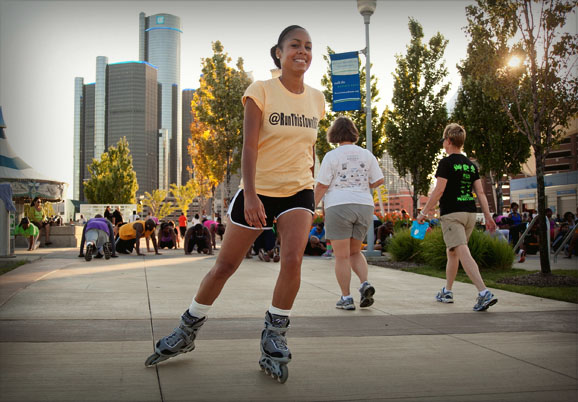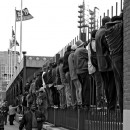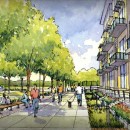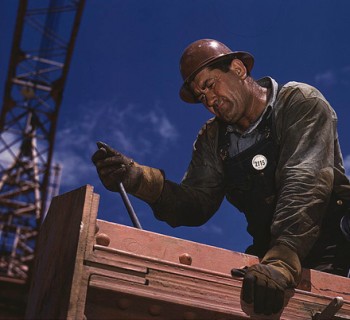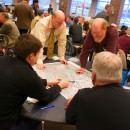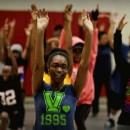DETROIT—Well, inline skating, actually, is what it’s technically called since Rollerblade is the trademarked brand name of the most popular wheeled footwear.
It used to be that you’d see hundreds of skaters traversing the city and suburban streets and parks. In the ‘90s, the sport had a vibrant singles’ scene with group outings, Belle Isle hosted races, and local retailers stocking a selection of brands and a variety of styles.
Now? Well, it’s rare to see a skater amid the walkers, skateboarders, runners and cyclists along the Detroit RiverWalk, for example.
“Every year we think there will be an increase,” says Bryan Breslin, the manager at Bikes, Blades and Boards in Grosse Pointe Park. In the spring and early summer, they have a modest increase in skate purchases.
“Then it falls off and disappears,” he says. “They move on to other sports … and skateboarding is really popular.”
So what happened to inline skating?
For some skaters in metro Detroit, the answer to the question is “nothing.”
Amy Peterson, an accomplished figure skater in her youth, still gets out on her skates at least once a week in the summer.
“I don’t care if I’m cool or not,” says the attorney who works at the Detroit Tigers. “It’s good exercise and it’s better than running. You’re going further. I just really enjoy it.”
Peterson seems to be an exception in her sustained intensity over the last decade or so.
In the ‘90s, the sport had a vibrant singles’ scene with group outings, Belle Isle hosted races, and local retailers stocking a selection of brands and a variety of styles.
Take Laurie Bunn, of Grosse Pointe Woods, who as few as six or seven years ago would have been on her inline skates a couple times a week and took them with her when she traveled. She’s rolled Chicago, Washington D.C. and other Michigan cities.
“I liked getting places faster than walking. I liked not having to park a bike and come back to it. I would just put my ‘blades in a backpack and continue on,” she says. “But I stopped ‘blading as much when I had kids. I’m less physically confident and more concerned with having an accident that would make child care challenging.”
Lately she’s only been out on her skates once a month or so, and she doesn’t see very many other skaters in the Grosse Pointes.
“People just lost interest when running and biking became the hip things to do,” Bunn says.
Bygone era
Walter Johnson used to run skating groups through downtown Detroit for up to 125 people who would meet on week nights, glide through the entertainment districts and along then roadways and stop at restaurants and watering holes.
“Detroit was the best street skating in the country. Downtown had no traffic at night,” says Johnson, now retired to Florida from his Michigan-based job with the Internal Revenue Service. “Streets like Gratiot, is several lanes wide with a wide parking lane so if there were cars out there, there was still room to skate. … People would come from out of town, and I’d take them over on Second Avenue, through the historical districts, and people were amazed.”
Johnson sees Detroit’s growing miles of bike lanes and greenways as infrastructure that will attract more skaters.
“I’d like to think that with alternative transportation, skating would be one of them, that there will be resurgence [in its popularity],” he says. “Skating has been so wonderful. I’ve met so many great people and have been to so many places I never would have dreamed about.”
Take the advantages
Skating enthusiasts tout several of its benefits over walking, running and cycling:
- Skates are portable, you can take them off at your destination, provided you carry shoes in a backpack, and you don’t need to lock them outside (and worry about them getting stolen). Also, you can pack them for free in your luggage if you fly – compare that to the up-to $150 each way to check a bicycle.
- Skates are relatively cheap. OK, they are pricier than a moderate-range running shoe, but they are much more affordable than a bicycle.
- Skating is a low-impact, full-body, cardiovascular workout.
Yet they admit there are some challenges to inline skating recovering its late 20th century popularity:
- It’s considered dorky, harkening back to an era of neon colors, Sony Walkmans and fanny packs.
- Not every recreational skater is an accomplished skater, able to stop easily, spin, skate backward and navigate curbs. The thought of hitting the pavement – literally – is not attractive.
- Finding smooth pavement in local neighborhoods and planning safe routes is perceived as difficult.
- Marathons and triathlons are the “in” sports challenge, and skating doesn’t often fit in those athletes’ training plans.
- The marketing efforts largely focus on the tricksters – adolescents and teens on ramps and making jumps – and not drawing in adults, younger children, and them together as families, who could skate for recreation, health and fitness.
- Few stores stock a variety of makes and models of skates making it difficult for shoppers to choose the correct skate with proper fit. That makes Internet shopping an even bigger challenge if customers haven’t tried on skates at all.
But at least one company is facing that challenge. At www.inlinewarehouse.com, skaters can order skates, have them shipped and then have 365 days to return them with no shipping cost. That way, skates are conveniently delivered, the fit can be tested and the skates may be relatively easily returned if they don’t fit the buyers’ feet.
Skate the Greenways
The advent of Detroit’s greenways might bring inline skating back as well. That’s happened in other places around the country, says Colleen Clark, a spokeswoman and blogger for the International Inline Skating Association.
“With all the emphasis on bike paths and bike safety, it’s given people many more safe places to skate,” she says.
For Clark, the passion for skating never left. She learned in the ‘80s while living in Minneapolis, the birthplace of inline skating, and continues to this day. She’s rolled in 23 states and six countries.
She’s heartened by some national trends. “In the last two or three years, the Skate Instructors Association has seen a huge increase in classes,” Clark says.
Her prediction: the newcomers will grow the sport but she credits the longtime skaters for sticking with it. “People who lived it for fitness and racing kept it alive,” she says.
Sandra Svoboda – with a hip replacement and new ACL – can’t run anymore. She bought new skates this year after learning replacing her wheels and bearings on her circa 1994 skates would cost almost as much as a nice new pair. After a decade hiatus from inline skating, she’s wobbly. But she’s out there on the RiverWalk, the Dequindre Cut and Belle Isle.
For additional skating inspiration, we’ve selected the perfect video for you:

Get out to Belle Isle and do some inline skating! It's a fun and easy way to get exercise!


